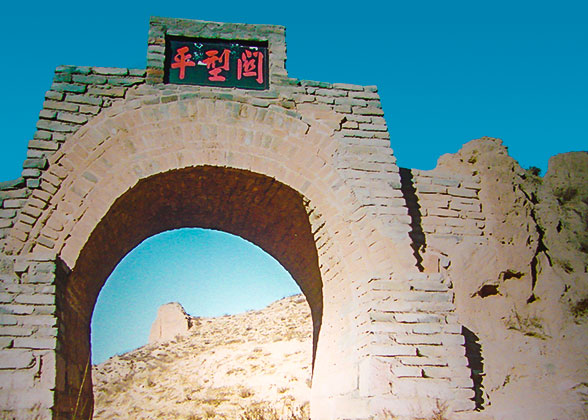Pingxing Pass (Pingxingguan)
 |
| Pingxing Pass of Great Wall |
Pingxingguan- A Pass with Strategic Location
The Pingxing Pass was constructed in 1511 during the Ming Dynasty (1368-1644), so it has a history of more than 500 years. Basically in a square shape, it has a girth of 0.6 mile (1 kilometer) and three gates: the North Gate, the East Gate and the South Gate. Over the East Gate hangs a tablet which reads "Pingxing Pass". Magnificent barbicans were constructed outside these gates. As time has passed, only the northern barbican remains. To the south of the pass, there were two beacon towers to send military messages. Inside the pass, there were yamens, government offices of the past. Now, they have been transformed into dwellings.
The pass was renovated from May, 2014 to July, 2015. Only some necessary reinforcement was added, thus retaining its original beauty. Today you can see the pedestal and the gate tower. The pedestal is made of blue bricks. The gate tower is in traditional Chinese style, with red pillars and overhanging eaves.
Battle of Pingxingguan
Also, you can see a memorial hall opposite the Laoye Temple, which was built in 1970 in memory of the heroes. In front of the memorial hall is a sculpture complex of the major generals. Behind the sculpture complex, you can see tall granite steles that are engraved with the comments of some leaders on the battle. Entering the memorial hall, you can see some marching maps, operation maps, and statues of major commanders. There are also some historical relics on display, such as kerosene burners, straw sandals, worn uniforms, iron pots, and outdated weapons. Seeing these items, you will think of war, and ponder over the value of peace.
How to Get to Pingxing Pass
- Last updated on Feb. 29, 2024 by Brenda Lian -